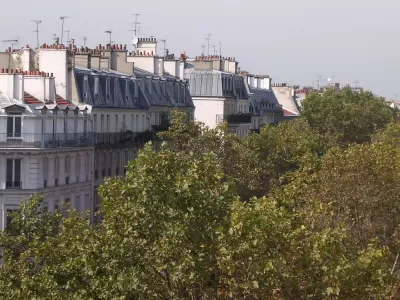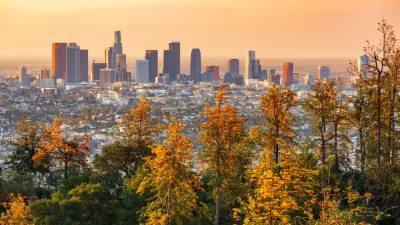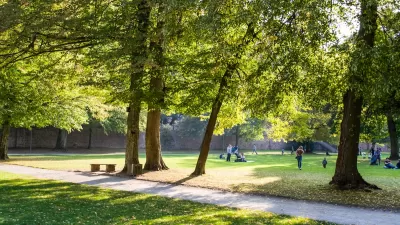Urban trees play an essential role in making cities livable and countering the effects of climate change.

Oliver Balch reports on the role of urban trees in cities around the world. The measures and data sources used to measure canopy cover can vary, which means rankings differ as well. In addition, experts say that absolute measures of tree numbers should not be the sole focus. "Access to trees, not their quantity, is what really matters, [Simone Borelli] argues. Can city-dwellers sense, see or, ideally, touch the trees in their city?"
The factors behind high levels of tree coverage in cities are a combination of geographic location and public policy. In Singapore, for example, planting and maintaining trees and green spaces are policy priorities included in development plans. "There are about 7 million trees in Singapore, approximately 3 million of which are along streets, in parks, residential and industrial estates. And [National Parks Board] has stepped up efforts in recent years by planting more than 50,000 trees a year along roadsides, and in parks and gardens," says Balch.
And while many cities recognize the importance of tree canopies, trees have become environmental casualties of development in other cities. In Atlanta, over half a million acres of trees were lost between 1973 and 1999 as the city grew. "Another case in point, environmentalists argue, is the proposed £88bn fast-rail HS2 project in Britain. In September, green campaign groups called on the pending clearance of ancient woodlands to be paused until the results of an independent review are published," notes Balch.
FULL STORY: Green streets: which city has the most trees?

Study: Maui’s Plan to Convert Vacation Rentals to Long-Term Housing Could Cause Nearly $1 Billion Economic Loss
The plan would reduce visitor accommodation by 25,% resulting in 1,900 jobs lost.

North Texas Transit Leaders Tout Benefits of TOD for Growing Region
At a summit focused on transit-oriented development, policymakers discussed how North Texas’ expanded light rail system can serve as a tool for economic growth.

Why Should We Subsidize Public Transportation?
Many public transit agencies face financial stress due to rising costs, declining fare revenue, and declining subsidies. Transit advocates must provide a strong business case for increasing public transit funding.

How to Make US Trains Faster
Changes to boarding platforms and a switch to electric trains could improve U.S. passenger rail service without the added cost of high-speed rail.

Columbia’s Revitalized ‘Loop’ Is a Hub for Local Entrepreneurs
A focus on small businesses is helping a commercial corridor in Columbia, Missouri thrive.

Invasive Insect Threatens Minnesota’s Ash Forests
The Emerald Ash Borer is a rapidly spreading invasive pest threatening Minnesota’s ash trees, and homeowners are encouraged to plant diverse replacement species, avoid moving ash firewood, and monitor for signs of infestation.
Urban Design for Planners 1: Software Tools
This six-course series explores essential urban design concepts using open source software and equips planners with the tools they need to participate fully in the urban design process.
Planning for Universal Design
Learn the tools for implementing Universal Design in planning regulations.
City of Santa Clarita
Ascent Environmental
Institute for Housing and Urban Development Studies (IHS)
City of Grandview
Harvard GSD Executive Education
Toledo-Lucas County Plan Commissions
Salt Lake City
NYU Wagner Graduate School of Public Service





























